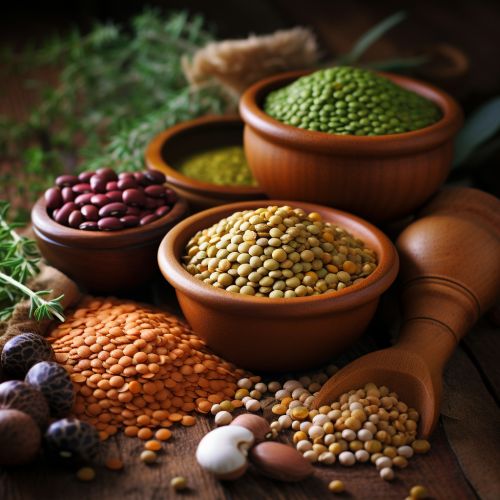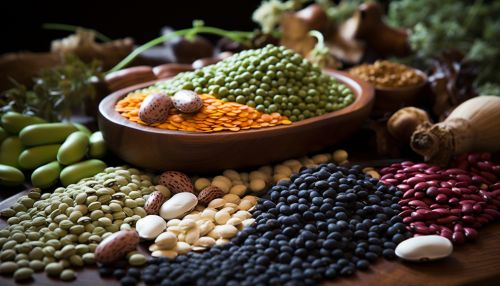Legumes
Introduction
Legumes, also known as pulses, are a group of plant species in the family Leguminosae. They are notable for their ability to fix atmospheric nitrogen, an accomplishment attributable to a symbiotic relationship with certain bacteria known as rhizobia contained in their root nodules. This family, also known as the pea family, includes over 20,000 species of plants, including peas, beans, lentils, and peanuts.


Classification and Types
Legumes are classified into three main types based on their growth habit: herbs, shrubs, and trees. The herbaceous legumes include plants like peas and beans, shrubs include species like clovers and alfalfa, and trees include species like acacia and locust.
Nutritional Value
Legumes are a rich source of protein and dietary fiber. They also provide essential minerals such as iron, potassium, and magnesium. Many legumes also contain a good amount of B vitamins, particularly folate, and some types, like soybeans, are a good source of omega-3 fatty acids.
Cultivation and Harvesting
Cultivation of legumes varies depending on the species. Some, like peas and beans, are annuals and are grown from seed each year. Others, like alfalfa and clover, are perennials and can be harvested multiple times over several years.
Uses
Legumes have a wide range of uses, from food for humans and animals, to improving soil fertility through nitrogen fixation, to providing raw materials for industrial uses.
